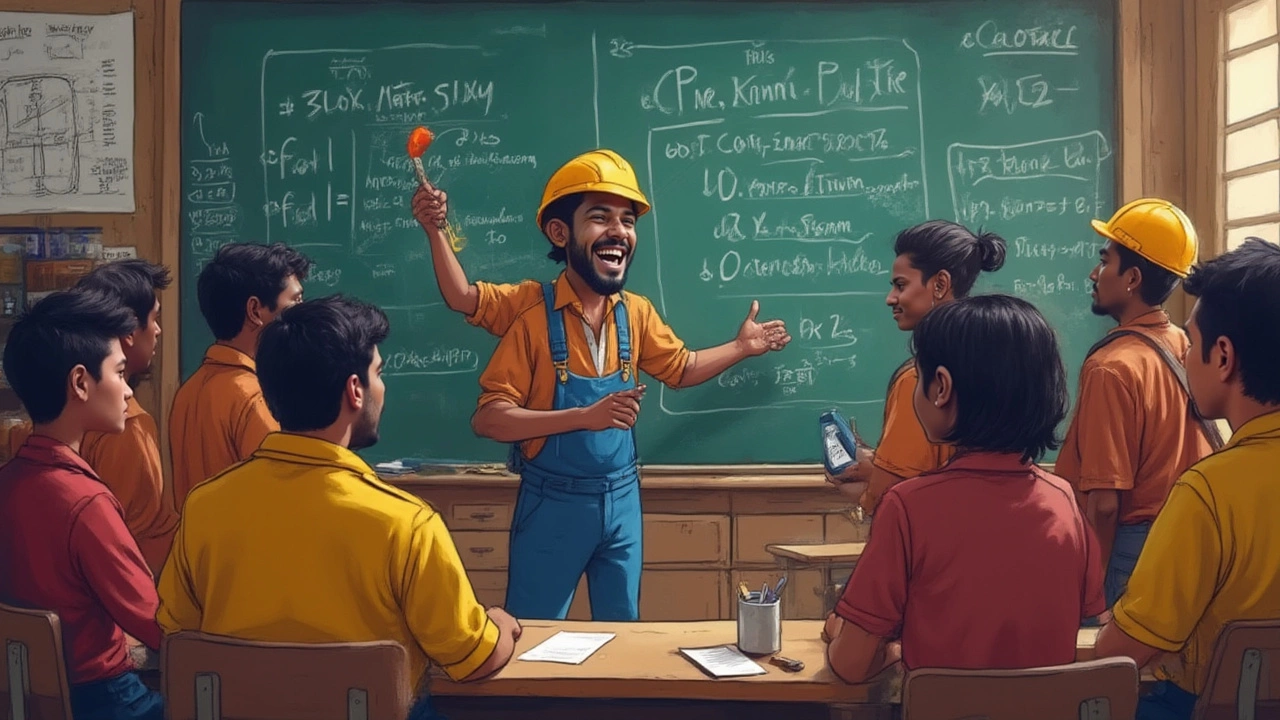
You stare at the wiring in your kitchen, wondering if the people who fix these things daily have a calculator for a brain. Maybe your hands are steady, your brain is sharp, and you love building things, but—math? Forget it. Did you nearly flunk algebra in school? You’re definitely not alone. I've watched my son Kabir pull his hair out over fractions, so I get it. But the trades always called out to the hands-on thinkers, the ones who measure problems in sweat and grit, not just decimal points. Can you still become an electrician if math makes you sweat more than a summer blackout?
The Truth Behind Math in the Life of an Electrician
Electricians aren’t expected to be math professors. No whiteboard calculations, hardly any trig. Here’s the thing: the math you need is practical. You’re dealing mostly with addition, subtraction, multiplication, and division. Of course, there’s some measuring, a bit of algebra, and every so often a percent here or there. Don’t picture reading a gigantic calculus textbook under a flickering bulb.
Let’s get real: standard tasks require no more than what you’d see at the checkout line. Take this: You have to calculate the power load on a circuit. Classic electrician stuff. You look up the formula, plug in the numbers. Amps = Watts ÷ Volts. If you can handle splitting a pizza between kids—"Kabir gets three slices, Leela gets two"—you’re halfway there.
But sometimes you’ll need measuring tape, or a conversion between units, or adding up wire lengths. You don’t do it in your head; you use cheat sheets, calculators, and even apps. In fact, the U.S. Bureau of Labor Statistics points out that most electricians use mobile calculators or digital tools on the job. You also use color codes and step-by-step diagrams way more than abstract math theory.
Check this out:
| Common Math Tasks | How Often? | Tools/Support |
|---|---|---|
| Simple addition/subtraction | Daily | Calculator, tape measure |
| Multiplying circuits/wires | Frequently | Calculator, reference cards |
| Algebra (e.g. Ohm’s Law) | Occasionally | Ohm’s Law wheel, reminders |
| Conversions (feet/meters) | Weekly | Smartphone apps |
| Fractions (e.g. pipe size) | Often | Fraction calculators |
Many older electricians will tell you straight out: hardly anyone aces every math problem on the first go. You learn as you work, and veteran coworkers show you tricks until you get comfortable. Some apprenticeship programs, like those run by the National Electrical Contractors Association, even have built-in math refreshers at the start.

Real Stories: Electricians Who Didn’t ‘Get’ Math at School
The stereotype goes: electricians are number ninjas. It’s not true. Of the electricians I know, a good chunk admit they never felt confident with math growing up. I met one guy who spent four years sweeping floors before he even touched a wire because he thought he’d fail the apprentice math test. He got plenty of help—study groups, YouTube videos, and online calculators. Now he works commercial projects and barely blinks at calculations.
Ask around in any break room and you’ll hear stories like Leela’s friend's cousin—he bombed pre-calc, but he can wire a whole house blindfolded (well, not really, but you get the point). What matters isn't some deep love of equations, but your willingness to learn basic formulas and solve problems step by step.
Apprenticeship programs are designed for real people, not geniuses. They usually start slow: safety first, then basic tools, then the easy math stuff. It ramps up over a few years, not days. The key is: practice and repetition. You review wiring codes, do walkthroughs, and memorize conversion charts. If you freeze up at long division, there are free online courses and tutorial apps. Many local unions even offer one-on-one help if you need extra support.
Let’s demystify the entry process:
- Most programs require a high school diploma (or GED)—which means you’ve already passed some basic math at some point.
- You might have to take a math placement test. These usually cover multiplication, division, proportions, and basic algebra. If you bomb it, you can retake after studying.
- Lots of people start with shaky math and pick it up as they go, especially when they see how these skills solve real-life problems—like avoiding an overloaded circuit or calculating cable length for a job.
One practical hack? Many electricians keep a note card of the 5–6 formulas they use most taped just inside their toolbox. You don't have to memorize everything by heart. The secret sauce is learning to look stuff up fast—and knowing what formula applies where.

Tips, Tricks, and Steps to Smooth Your Way into the Trade
If math gives you hives, you’re not doomed. Here’s what works for regular folks who want to jump in:
- Electrician apps are your friend: There are free phone apps that calculate voltage, amperage, and conversions in a few taps. No shame using them—pros do it all the time.
- Studying on the side: YouTube is flooded with how-to videos on basic electrical math. Even watching while you make dinner can help stuff sink in.
- Practice in real life: Next time you fix something around the house, try measuring, converting, and calculating. It’s more fun with a 'what’s in it for me?' vibe.
- Look for hands-on programs: When picking an apprenticeship, ask if they offer beginner-friendly math support. Some trade schools even have refresher workshops or online modules that you can complete at your own pace.
- Buddy up: Don’t be shy about asking older electricians or classmates to walk you through tough stuff. Most love teaching—they were in your shoes once.
- Skip perfection: You don’t need a spotless math record. You do need patience, curiosity, and the guts to ask questions. The only dumb question is the one you never ask.
- Cheat sheets are gold: Keep a small notebook with the key formulas (Ohm’s Law, breakers/wire size charts, device ratings). Pull this out on the job; nobody cares that you use it, as long as you get work done safely.
Here’s what’s wild—according to national test data, over 40% of electrician apprentices struggle with math at first. In the field, though, they lean on teamwork and tech to fill gaps. Technology is closing the math gap every year: calculator pens, smart tape measures, even augmented reality goggles that project wiring diagrams right in front of your eyes. We’re talking sci-fi-level solutions to old-school worries.
My two cents? If you like fixing things, solving real-world puzzles, and don’t run for cover every time someone mentions ‘voltage,’ you can absolutely train yourself into the math you need. The profession’s demand isn’t slowing down—electrical careers are predicted to grow 6-8% through 2032, according to the Bureau of Labor Statistics. People want steady work and solid paychecks, and math anxiety shouldn’t shut the door in your face.
I’ve helped Kabir with his math homework enough to know: repetition and real-life context win out over rote memorization. If you stick with it, use your resources, and lean on your teammates, you’ll find your groove. The confidence comes with time, not a perfect score on your first day.
And hey, if Kabir and Leela end up running wires one day, I’ll be the first one handing them a calculator, not a math book. Find solutions, not reasons to give up. That’s what makes a solid electrician—and the rest just clicks into place.
